Between Bergen and Stavanger on Norway’s west coast, Haugesund blends Viking heritage with a modern maritime identity, offering depth in history, culture and coastal nature despite its small size.
Despite living in Norway for eight years, I only recently made it to Haugesund. From coastal walks and charming old towns to historical sites that reach back to the Viking Age, there’s more to Haugesund than first meets the eye.
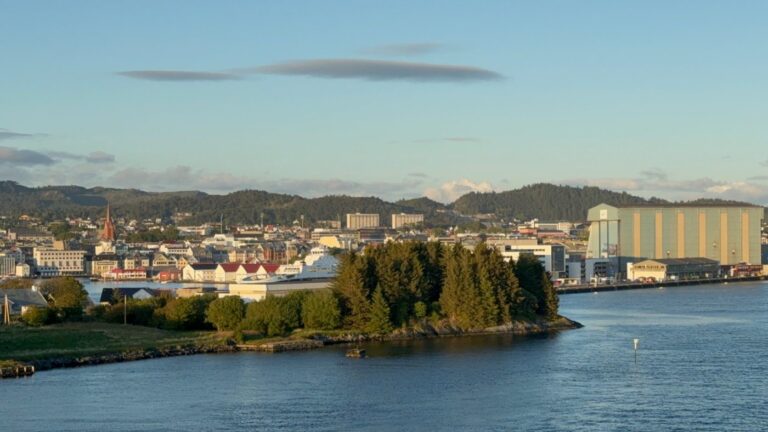
In many ways, it feels like a scaled-down version of Bergen or Stavanger. You’ll find all the essentials—hotels, shops, restaurants, and cultural attractions—along with easy access to wild landscapes and historic landmarks just beyond the city centre.
It was the Viking Age history that first drew me here. I’d long wanted to visit Avaldsnes, a site once home to Harald Fairhair, Norway’s first king.
Today, the region proudly reflects this Viking legacy while embracing its role as a hub for shipping, offshore energy and maritime studies.
Whether you’re planning a visit, considering a move, or have simply found yourself curious about this lesser-known corner of coastal Norway, here’s everything you need to know about Haugesund.
Table of Contents
An introduction to Haugesund, Norway
Check out this video for an introduction to Haugesund:
I hope you found that interesting! Now, if you’re planning a trip to the city or you’ve been offered a job in the region, here’s a guide to what to expect.
Where is Haugesund, Norway?
Haugesund is located on the west coast of Norway, roughly halfway between the larger cities of Bergen and Stavanger.
It sits in the northern part of Rogaland county, near the border with Vestland, and forms part of a wider urban region that includes nearby towns like Kopervik and the island of Karmøy.
The city itself is set on the narrow Karmsund strait, a historically important stretch of sheltered water that has guided ships for centuries. This location not only shaped Haugesund’s Viking-era significance but also laid the foundation for its modern identity as a maritime hub.
Getting to Haugesund is relatively straightforward, though the best method depends on where you’re coming from.
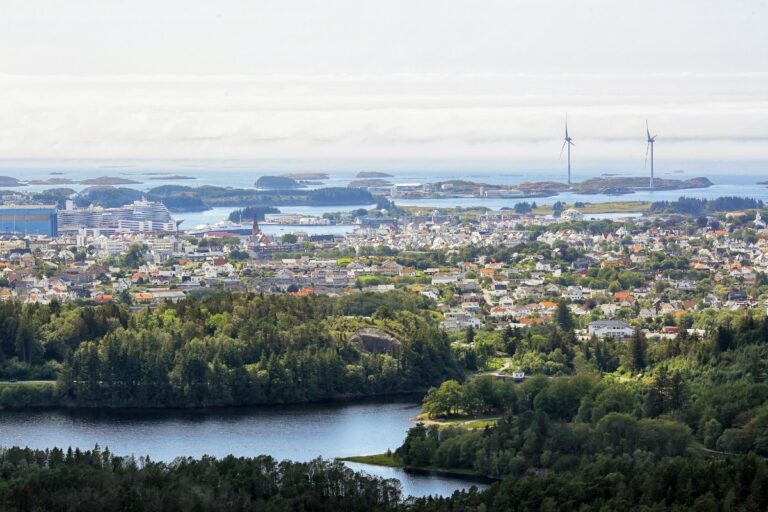
If you’re already travelling along the west coast, driving is a good option. The journey from Bergen or Stavanger takes around 2.5 to 3 hours by car, with scenic routes via Stord island and the impressive undersea tunnels and bridges that connect the region’s islands and fjords.
The Kystbussen express coach service also runs frequently between these cities and stops in Haugesund, offering a comfortable and efficient alternative.
Unfortunately, the former ferry route linking Bergen, Haugesund and Stavanger is no longer in service, so travel by sea is now limited to local ferries and island connections.
For travellers coming from further afield, flying is by far the quickest option. Haugesund Airport, located on Karmøy island about 15 minutes' drive from the city centre, offers regular flights to Oslo and occasional seasonal routes to international destinations.
History of Haugesund
Although Haugesund itself is a relatively young city, granted official town status as recently as 1854, the surrounding region has played a significant role in Norwegian history for well over a thousand years.
Long before Haugesund was founded, the sheltered waters of the Karmsund strait were a key shipping route along the coast, offering safe passage in an otherwise treacherous sea. This strategic location made the area a natural gathering point for early settlers.
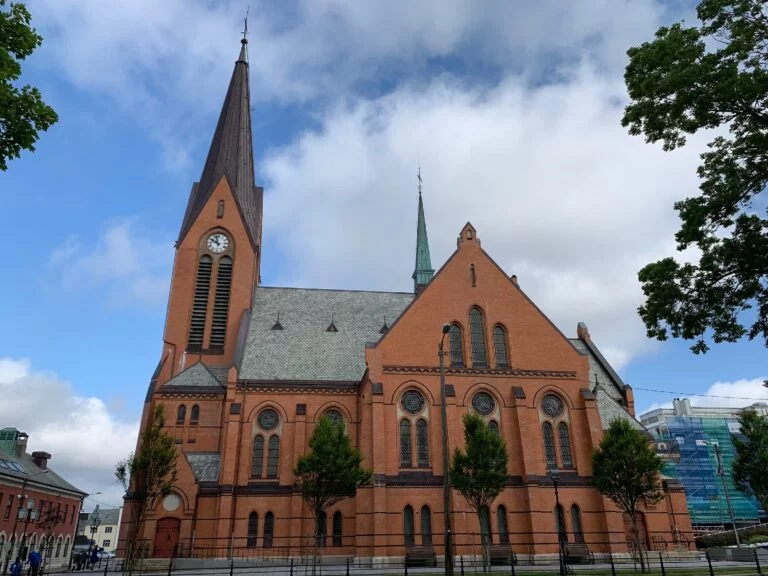
Just across the strait on Karmøy island lies Avaldsnes, one of Norway’s most important Viking-era sites. Regarded as the country’s first royal seat, Avaldsnes was home to Harald Fairhair, the Viking king who is credited with uniting Norway into one kingdom in the 9th century.
Fast-forward to the 19th century, and Haugesund began to grow rapidly thanks to the herring boom. For a time, the coastal waters off the city were among the richest herring fisheries in the world.
This abundance of fish fuelled both population growth and economic development, drawing workers, traders and shipowners to the fledgling town. The wealth generated from herring laid the foundation for Haugesund’s evolution into a maritime city.
Shipbuilding, shipping and offshore services all became major industries, and Haugesund remains closely linked to the sea today. The city's shipowners played a vital role during both World Wars, particularly in maintaining supply lines through the dangerous Atlantic waters.
Things To Do in the Haugesund Region
While the city itself is pleasant enough, most sites of interest to tourists are on the nearby Karmøy island.
Karmøy Island
Here you’ll find Avaldsnes, home to the museum and viking village mentioned previously.

You’ll also find Avaldsnes church, built sometime around 1250 by King Håkon Håkonsen. However, it's presumed there had been a previous wooden church there built by Olav Tryggvason a few hundred years prior.
The church is surrounded by burial mounds from pre-christian times, something which is also common in parts of Sweden and Denmark.
Also on Karmøy, historic Skudeneshavn is a still-thriving, real-life 19th-century clipper town. Home to more than 200 beautiful wooden houses, the old town, Gamle Skudeneshavn, is regarded as one of the best preserved in Europe.
Haugesund City
The central feature of the town itself is the Karmsund sound, which runs through its heart. The waterfront area has several bars and restaurants, making it a pleasant place to stroll or relax on a sunny day.
Keep an eye out for the rather unexpected statue of Marilyn Monroe. It's a playful nod to local lore that her grandfather may have come from the region.
Built in 1931, the distinctive pink Haugesund City Hall is one of Norway’s most recognisable examples of neo-classical architecture. It was a gift to the city from shipping magnate Knut Knutsen and his wife Elisabeth, and today it remains a striking landmark.
Our Savior’s Church (Vår Frelsers Kirke) is another prominent feature of the city centre. Built in 1901 in neo-Gothic style using red brick, it seats around 850 people.
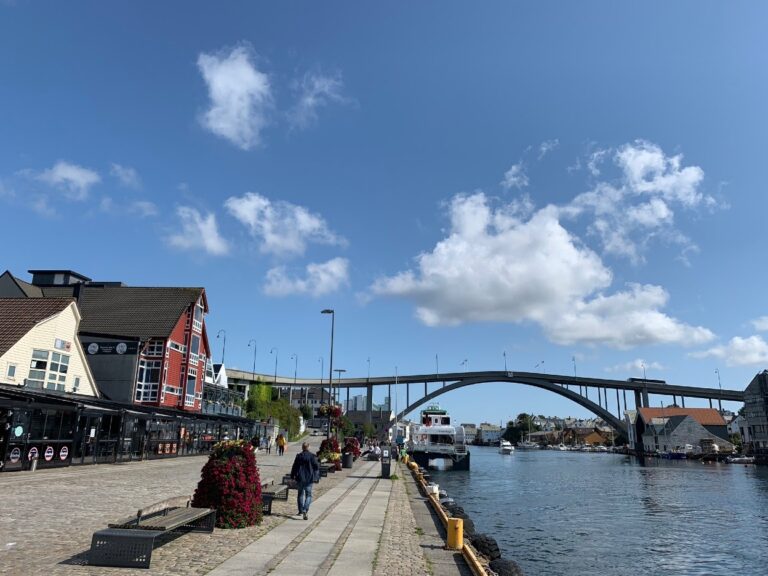
A short drive or longer walk north of the city centre brings you to Haraldshaugen, Norway’s national monument to Harald Fairhair, the Viking king credited with uniting the country. Erected in 1872, the monument stands on a site offering views across the sea.
Planning a trip to Haugesund? Check out our complete guide to things to do in Haugesund.
Utsira: Norway’s Smallest Municipality
Just over an hour by ferry from Haugesund lies Utsira, Norway’s smallest municipality by population. Home to around 200 people, this remote island in the North Sea offers a peaceful escape and a glimpse into coastal life at its most authentic.
Despite its size, Utsira has a lot to offer. The island is a magnet for birdwatchers, especially during the spring and autumn migrations, thanks to its location along key flyways. It's considered one of the best birding spots in Norway, with hundreds of species spotted over the years.
Utsira is known for its open-air street art, with colourful murals painted across buildings as part of an initiative to bring contemporary art to the island’s traditional setting.
Add to that historic lighthouses, dramatic coastal walks, and a sense of isolation that’s hard to find elsewhere, and you’ve got a destination that feels far off the tourist trail.
Ferries run daily from Haugesund, making it possible to visit as a day trip. However, many visitors choose to stay overnight to soak up the atmosphere and enjoy the changing light and sea views.
Living in Haugesund
Haugesund municipality is home to just under 38,000 people, while the broader urban area brings the local population to around 46,000. The population is diverse, with a steadily growing number of residents with an immigrant background.
The largest international community comes from Poland, followed by notable groups from Lithuania, the Philippines, Vietnam, Iraq, Eritrea and Germany. This diversity contributes to a surprising multicultural atmosphere in the city.
Haugesund’s economy is closely tied to the sea. The region has long been a centre for shipbuilding, maritime services and offshore energy, and this legacy continues today.
Aibel, one of Norway’s leading engineering companies in the oil, gas and renewable sectors, is based in Haugesund and remains the city’s largest private employer. Knutsen OAS Shipping, which operates a modern fleet of tankers and chemical carriers, is also based here.
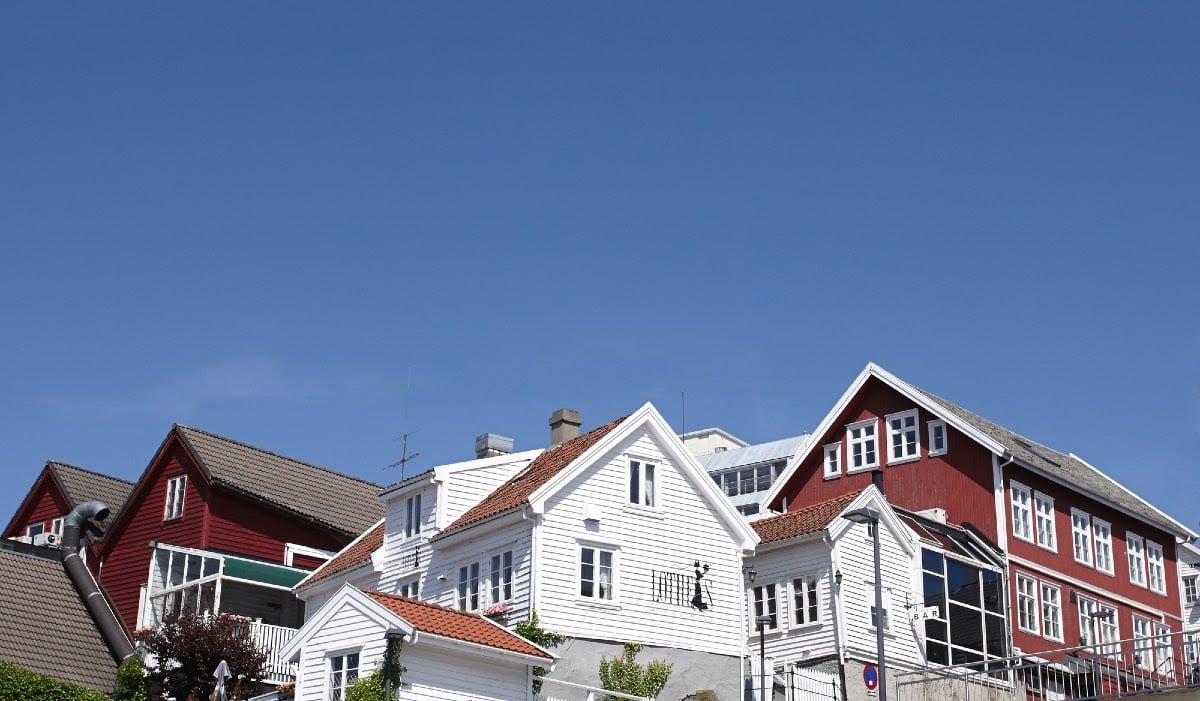
The Norwegian Maritime Authority, a national agency responsible for shipping safety and standards, is based here too, providing stable government jobs and reinforcing the city’s reputation as a maritime hub.
While heavy industry still plays a central role, Haugesund has seen increasing investment in technology, logistics, and services. Nearby industrial areas on Karmøy also contribute to the regional economy, particularly in transport, sea cargo, and offshore engineering.
Retail and tourism are also growing sectors, boosted by the city’s central shopping streets, expanding cruise tourism, and annual cultural events.
The quality of life in Haugesund is generally high. The cost of living is slightly below the national average, particularly when it comes to housing and everyday expenses.
While it doesn’t offer the same variety as Norway’s biggest cities, Haugesund balances convenience and comfort with a more relaxed pace of life. Schools, healthcare facilities and public services are modern and accessible, and the city is small enough that most things are within walking or cycling distance.
Student life in Haugesund
Haugesund is home to a campus of the Western Norway University of Applied Sciences (HVL). Other campuses are located in Bergen, Førde, Sogndal and Stord.
Several modern buildings within walking distance of each other make up the city centre campus. The main building is located next to the hospital, town hall, theatre and court house. Student accommodation is located in the city centre or within walking distance.
The Haugesund campus has a focus on maritime studies and features seven bridge simulators and a classroom with 12 training stations for navigational instruments and cargo loading. There is also a library and on-campus bookstore.
Weather & Climate in Haugesund
Like much of Norway’s west coast, Haugesund has a maritime climate with relatively mild winters and cool, damp summers. Rain is common throughout the year, so a waterproof jacket is more essential than sunglasses—although when the sun does shine, the city comes alive.
Average summer temperatures hover around 15–18°C, while winter rarely drops far below freezing. Snowfall does occur, but usually doesn’t last long in the city itself. Spring and early autumn can be lovely times to visit, with fewer tourists and bursts of coastal colour.
Events & Festivals in Haugesund
The biggest event on Haugesund’s cultural calendar is the Norwegian International Film Festival, held every August.
The event attracts filmmakers, critics and cinema lovers from across Scandinavia and beyond. During the festival, the prestigious Amanda Awards—Norway’s version of the Oscars—are also presented.
But the city has more to offer than just film. The Sildajazz Festival, usually held in August, brings world-class jazz performances to Haugesund’s streets, squares and venues. The name refers to the city’s herring (sild) heritage, which played a key role in its economic development.
Other annual events include local Christmas markets, summer concerts and maritime-themed celebrations that reflect the city’s seafaring history.

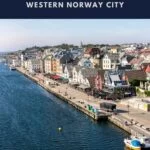

Surprised that you did not mention Visnes, once the site of the mine which provided more than 90% of copper for the Statue of Liberty. Also the startlingly beautiful beach in Akrehamn with its soft white sand and turquoise waters that attract surfers from all over the country and more. Also there is a museum in Visnes about the copper mine.
I used to live in visnes. Just a stone throw away from the mine and museum. Its worth a visit especially on a Sunday and have lunch there.
Thank you for the post,I am from India,I may be offered a job in Haugsund. Can anyone let me know the following:
1) a tentative monthly rent for a one bhk apartment,for a family of 3 inside city,(one 3.5 year old child plus parents).
2)Also what is the coldest temperature expected and how many months the windy and very cold spell continues?
3) Has the ferry service connecting Stavenger and Bergen resumed. David’s above article in 2021 mentions it no longer operates.
Thank you for reading,
Kind Regards,
Saikat